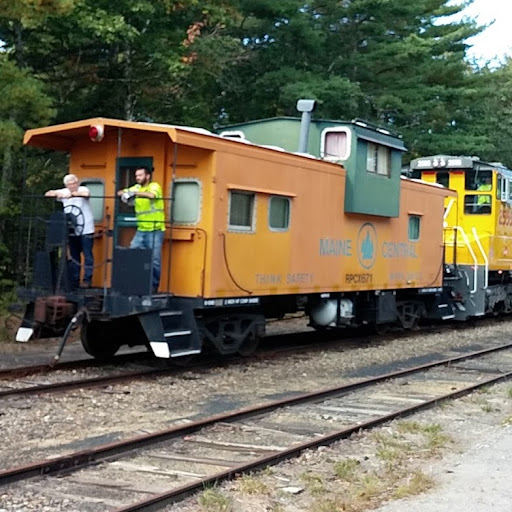David Leevern Ml Bird
age ~78
from Morley, MI
- Also known as:
-
- David L Bird
- David Leevern Bird
- David B Ird
- Phone and address:
-
2080 215Th Ave, Morley, MI 49336
4123352355
David Bird Phones & Addresses
- 2080 215Th Ave, Morley, MI 49336 • 4123352355
- Fountain Hills, AZ
- Freeport, PA
- Atlantic City, NJ
- Aurora, CO
- Maricopa, AZ
Work
-
Company:Reed Smith
-
Address:1 Oxford Street, Pittsburgh, PA 15205
-
Specialities:Appeals - 100%
Education
-
Degree:JD - Juris Doctor
-
School / High School:University of Chicago Law School
Languages
English
Ranks
-
Licence:Pennsylvania - Active
-
Date:2004
Specialities
Marriage & Family Therapy
Resumes

David Bird Bella Vista, AR
view sourceWork:
Wood Specialty Products Inc
Jun 2011 to 2000
Quality Manager J & S Construction
Hudsonville, MI
Feb 2006 to Jun 2011
Project Manager Riley Construction Associates
Rockford, MI
Oct 2003 to Feb 2006
Supervisor The Grand Rapids Press
Jun 2000 to Aug 2003
Sales and Customer Service Representative
Jun 2011 to 2000
Quality Manager J & S Construction
Hudsonville, MI
Feb 2006 to Jun 2011
Project Manager Riley Construction Associates
Rockford, MI
Oct 2003 to Feb 2006
Supervisor The Grand Rapids Press
Jun 2000 to Aug 2003
Sales and Customer Service Representative
Education:
Kent Career Technical Center
Grand Rapids, MI
1998 to 2000
Construction Management Program Forest Hills Northern High School
Grand Rapids, MI
1996 to 2000
Diploma
Grand Rapids, MI
1998 to 2000
Construction Management Program Forest Hills Northern High School
Grand Rapids, MI
1996 to 2000
Diploma
Skills:
On the job ISO 9000 and Lean Manufacturing Training Proficient knowledge of Microsoft Office Applications Auto-CAD/CAM Applications Adobe Suite Extensive experience managing projects and leading cross functional teams Data analysis with acclimation to develop programs and strategies as needed

David Bird Prescott, AZ
view sourceWork:
Mollen Immunization Clinics, LLC
Scottsdale, AZ
2008 to 2010
Customer Care Professional - Mollen Immunization Clinics, LLC Bankers Life
Glendale, AZ
2007 to 2008 Tim's Buick
Prescott, AZ
2003 to 2006
Accountant/Title Processor So NH Medical Center
Nashua, NH
2000 to 2003
Accounting Clerk Glendale Adventist Med Ctr
Glendale, CA
1998 to 1999
Capitation Analyst - Finance Business Office
Glendale, CA
1996 to 1998
Accountant Tech NMB (USA)
Chatsworth, CA
1994 to 1995
Associate Accountant MSI Laboratories
Burbank, CA
1992 to 1994
Medi-Cal Supervisor Progressive Orthopedic Mfg
Sacramento, CA
1987 to 1992
A/R Supervisor
Scottsdale, AZ
2008 to 2010
Customer Care Professional - Mollen Immunization Clinics, LLC Bankers Life
Glendale, AZ
2007 to 2008 Tim's Buick
Prescott, AZ
2003 to 2006
Accountant/Title Processor So NH Medical Center
Nashua, NH
2000 to 2003
Accounting Clerk Glendale Adventist Med Ctr
Glendale, CA
1998 to 1999
Capitation Analyst - Finance Business Office
Glendale, CA
1996 to 1998
Accountant Tech NMB (USA)
Chatsworth, CA
1994 to 1995
Associate Accountant MSI Laboratories
Burbank, CA
1992 to 1994
Medi-Cal Supervisor Progressive Orthopedic Mfg
Sacramento, CA
1987 to 1992
A/R Supervisor

David Bird Prescott, AZ
view sourceWork:
Administrative Support
Registered
Customer Service & Reception Mollen Immunization Clinics, LLC
Scottsdale, AZ
Customer Care Professional - Mollen Immunization Clinics, LLC
Customer Service & Reception Mollen Immunization Clinics, LLC
Scottsdale, AZ
Customer Care Professional - Mollen Immunization Clinics, LLC
Medicine Doctors

David Michael Bird
view sourceSpecialties:
Internal Medicine
Education:
Texas Tech University(1992)
License Records
David Kelsey Bird
License #:
366965 - Active
Category:
Contractor
Issued Date:
Sep 8, 2010
Expiration Date:
Sep 30, 2019
Wikipedia

David Bird
view sourceDavid Bird (born 1946 in London) is the world's most prolific bridge writer, with over one hundred books to his name. He is bridge correspondent for the Mail on ...
Us Patents
-
Process For Sorting Large Lists On A 64-Bit Computing Platform
view source -
US Patent:20070100825, May 3, 2007
-
Filed:Nov 1, 2005
-
Appl. No.:11/267784
-
Inventors:Russell Guenthner - Glendale AZ, US
Clinton Eckard - McMinnville TN, US
David Bird - Phoenix AZ, US
John Heath - Glendale AZ, US -
International Classification:G06F 7/00
-
US Classification:707007000
-
Abstract:A process for sorting large files or structures is disclosed where improved performance is achieved by reducing the work involved and the time required to do record key comparisons. The reduction is achieved by transposing and saving the key data from each record into a representative form that can be more quickly compared each time the key comparison is required. In addition the process uses pointers to avoid the processing time to exchange records larger than one word in memory. The representation of the key data is optimized and aligned for comparison by word based computer instructions which are typically faster than byte based instructions. The process is optimized for word sizes and instructions which handle words larger than four bytes and in particular for machines and instructions with 64-bit or larger word sizes such as the Intel Itanium series processors.
-
Logic Level Translator
view source -
US Patent:39744027, Aug 10, 1976
-
Filed:Mar 26, 1975
-
Appl. No.:5/562329
-
Inventors:Darrell L. Fett - Scottsdale AZ
David A. Bird - Phoenix AZ
Jerry L. Rauser - Crystal MN -
Assignee:Honeywell Information Systems, Inc. - Phoenix AZ
-
International Classification:H03K 114
H03K 1908 -
US Classification:307264
-
Abstract:A logic level translator utilizes a TTL logic gate, a current switch, and a clamp circuit to convert CML level binary signals into TTL level binary signals. The translator provides isolation between the TTL ground and the CML ground in order to reduce noise in the CML portion of the circuit. The clamp circuit prevents a switching transistor in the current switch from reaching saturation, thereby increasing the speed of operation of the translator. A portion of the current switch provides a quick pulldown of a switching transistor in the TTL circuit to reduce noise in the TTL circuit.
-
Logic Level Translator
view source -
US Patent:39596664, May 25, 1976
-
Filed:Jul 1, 1974
-
Appl. No.:5/484513
-
Inventors:Darrell L. Fett - Scottsdale AZ
David A. Bird - Phoenix AZ -
Assignee:Honeywell Information Systems, Inc. - Waltham MA
-
International Classification:H03K 1908
H03K 502
H03K 508
H03K 5156 -
US Classification:307208
-
Abstract:A logic level translator uses a current switch, a current source and a plurality of cathode followers to convert T. sup. 2 L and DTL level binary signals into CML and ECL level binary signals. The translator provides isolation between the T. sup. 2 L ground and the CML ground so that noise in the CML signals is reduced.
-
Open Loop Proximity Detector
view source -
US Patent:54264359, Jun 20, 1995
-
Filed:Oct 28, 1988
-
Appl. No.:7/263832
-
Inventors:Gerald J. Moore - Mesa AZ
David G. Bird - Mesa AZ -
Assignee:Motorola, Inc. - Schaumburg IL
-
International Classification:G01S 1308
-
US Classification:342 68
-
Abstract:An open loop proximity detector is contemplated which receives a Doppler frequency when a target is first detected, and predicts a specific fuzing Doppler frequency. The detector continues to transmit and receive electromagnetic waves and sends a detonating signal to the fuze when the predicted fuzing Doppler frequency is received by the detector. The Doppler frequency of the first, or front surface in a forward moving direction of the target is received and is used to detonate the fuze. Thus the ideal surface of the target, the front surface, detonates the fuze and Doppler frequencies from other surfaces of the target are not allowed to interfere with the detonating process.
Lawyers & Attorneys

David James Bird, Pittsburgh PA - Lawyer
view sourceAddress:
Reed Smith
1 Oxford Street, Pittsburgh, PA 15205
4122883542, 4122883542 (Office), 4122883063 (Fax)
1 Oxford Street, Pittsburgh, PA 15205
4122883542, 4122883542 (Office), 4122883063 (Fax)
Licenses:
Pennsylvania - Active 2004
Education:
University of Chicago Law School
Degree - JD - Juris Doctor - Law
Graduated - 2002
University of Chicago
Degree - AB
Graduated - 1997
Degree - JD - Juris Doctor - Law
Graduated - 2002
University of Chicago
Degree - AB
Graduated - 1997
Specialties:
Appeals - 100%

David Bird - Lawyer
view sourceSpecialties:
Trusts
Corporate Law
Commercial Law
Corporate Law
Commercial Law
ISLN:
909019660
Admitted:
1971
Law School:
Aberdeen University, LL.B.

David Bird - Lawyer
view sourceOffice:
D. J. Bird Law, PC
Specialties:
Civil Rights
Elder Law
Election Campaigns & Political Law
Litigation
Elder Law
Election Campaigns & Political Law
Litigation
ISLN:
909019653
Admitted:
1980
University:
University of Utah, B.S., 1977
Law School:
Boalt Hall School of Law, University of California, J.D., 1980

David Bird - Lawyer
Name / Title
Company / Classification
Phones & Addresses
Director
ARIZONA HIGH SCHOOL HOCKEY ASSOCIATION, INC
PO Box 64383, Phoenix, AZ 85082
Director 4812 E Fernwood Ct, Cave Creek, AZ 85331
Director 4812 E Fernwood Ct, Cave Creek, AZ 85331
Secretary
Pressure Chemical Co
Mfg Chemical Preparations Mfg Industrial Inorganic Chemicals
Mfg Chemical Preparations Mfg Industrial Inorganic Chemicals
3419 Smallman St, Pittsburgh, PA 15201
4126825882
4126825882
President
BIRD BROTHERS CO., INC
President
WIZARD PAINTING, INC
Incorporator
KANAWHA I G A FOODLINER, INC
Wikipedia References

David Bird (Bridge)

David John Bird
Plaxo

David Bird
view sourceIndianapolis

David Bird
view source
David Bird
view source
David Bird
view sourceMessier-Bugatti USA
Googleplus

David Bird
Work:
Reed Smith LLP (2003)
U.S. Court of Appeals for the Fifth Circuit (2002-2003)
U.S. Department of Justice, Antitrust Division (1997-1999)
U.S. Court of Appeals for the Fifth Circuit (2002-2003)
U.S. Department of Justice, Antitrust Division (1997-1999)
Education:
University of Chicago, University of Chicago Law School

David Bird
Work:
Self employed bum hole
Education:
School of life and knocks

David Bird
Work:
Restoration Hardware
Education:
Modesto Junior College

David Bird
Work:
University of New Hampshire - Information Technologist (1999)
Relationship:
Single

David Bird
Work:
Dell - Project Manager
Microsoft - Programmer (2012)
Microsoft - Programmer (2012)

David Bird
Work:
Sussex Police - Lead DBA (2007)

David Bird (Brujah1980)
Work:
Self Employed - Network Administrator

David Bird (Ryan Savage)
Tagline:
Its David from North! I will change my wallpaper for a dare. That is why it is what it is.

David Bird Ballinger
view source
Cnor David Bird
view source
David Bird
view source
David Bird Roethemeyer
view source
David Bird
view source
David Bird
view source
Darren David Bird
view source
Kyle David Bird
view sourceYoutube
Get Report for David Leevern Ml Bird from Morley, MI, age ~78





